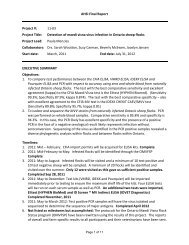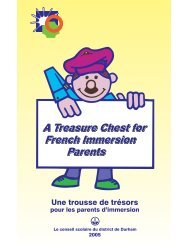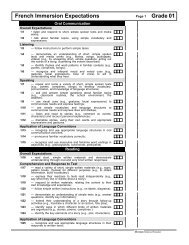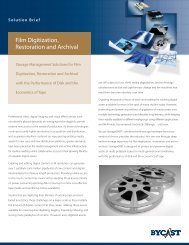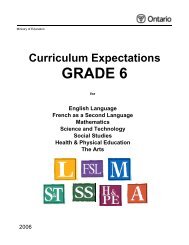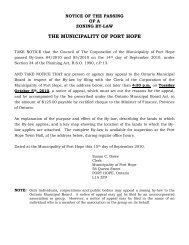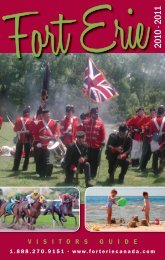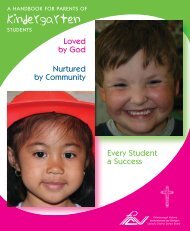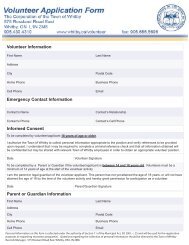GRADE 3 - PVNC Catholic District School Board
GRADE 3 - PVNC Catholic District School Board
GRADE 3 - PVNC Catholic District School Board
You also want an ePaper? Increase the reach of your titles
YUMPU automatically turns print PDFs into web optimized ePapers that Google loves.
The Arts Expectations<br />
Music<br />
Overall Expectations<br />
3a1 • demonstrate an understanding of the basic elements of music specified for<br />
this grade (see below) through listening to, performing, and creating music;<br />
3a2 • create and perform music, using a variety of sound sources;<br />
3a3 • use correctly the vocabulary and musical terminology associated with the<br />
specific expectations for this grade;<br />
3a4 • identify and perform music from various cultures and historical periods;<br />
3a5 • communicate their response to music in ways appropriate for this grade (e.g.,<br />
through visual arts, drama, creative movement, language).<br />
Knowledge of Elements<br />
3a6 – demonstrate understanding of the difference between the terms beat and<br />
rhythm (e.g., indicate the beat in a piece of music while others perform the<br />
rhythmic patterns);<br />
3a7 – identify the beat, rhythm, melodic contour (or shape), dynamics, and tempo<br />
in familiar pieces of music;<br />
3a8 – recognize that sounds and silences of different durations may be<br />
represented by symbols;<br />
3a9 – identify the instruments within the percussion family of orchestral instruments<br />
(e.g., drums, wood blocks, piano).<br />
Creative Work<br />
3a10 – sing music from a variety of cultures and historical periods;<br />
3a11 – substitute different words in familiar songs or create new verses, using their<br />
knowledge of rhythm to ensure that the new text fits with the melody;<br />
3a12 – create melodic contour “maps” that indicate the direction of pitches (higher,<br />
lower) in familiar songs (e.g., “Twinkle, Twinkle Little Star”);<br />
3a13 – indicate, with appropriate arm movements, the dynamics heard in familiar<br />
music (e.g., big movements for loud passages, small movements for soft);<br />
3a14 – sing expressively, showing awareness that changes in volume or speed can<br />
help to convey the meaning of the text;<br />
3a15 – create or arrange music to accompany a reading or dramatization, using<br />
appropriate rhythm instruments, body percussion, or “found” instruments;<br />
3a16 – create and perform musical compositions in which they apply their<br />
knowledge of the elements of music and patterns of sounds, and use the<br />
voice, instruments, or “found” materials.<br />
Critical Thinking<br />
3a17 – express their response to music from a variety of cultures and historical<br />
periods (e.g., “Chants Berbères” by Taos Amrouche);<br />
3a18 – communicate their thoughts and feelings about the music they hear, using<br />
language and a variety of art forms and media (e.g., storytelling, software<br />
program for drawing, creative movement);<br />
3a19 – identify the feelings that are evoked by a particular piece of music (e.g.,<br />
Peter and the Wolf by Sergei Prokofiev);<br />
3a20 – explain, using appropriate musical terminology, their preference for specific<br />
songs or pieces of music;<br />
3a21<br />
– identify and explain the effects of different musical choices (e.g., the effects<br />
of choosing specific instruments).<br />
Visual Arts<br />
Overall Expectations<br />
3a22 • produce two- and three-dimensional works of art that communicate ideas<br />
(thoughts, feelings, experiences) for specific purposes and to familiar<br />
audiences;<br />
Grade 03<br />
Ministry of Education



